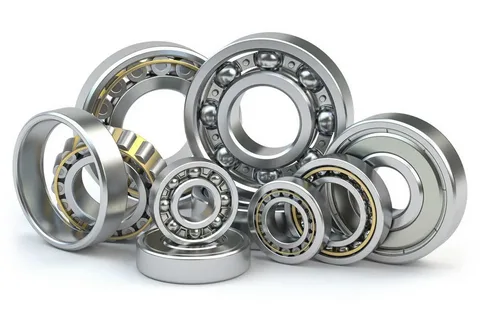Did you know ball bearings keep marine vessels moving smoothly against harsh ocean waves? These small components play a big role in the marine industry. Ball bearing uses span critical applications, ensuring equipment runs efficiently in tough conditions. This blog explores how ball bearings power marine innovation, their key roles in equipment, and why they matter. Readers will learn about types, benefits, selection, maintenance, and leading industry players. Discover how ball bearing types and applications drive marine performance.
Sailing Smoothly: The Power of Ball Bearings in Marine Innovation
Enhancing Vessel Efficiency
Ball bearings reduce friction in marine systems, boosting efficiency. They support rotating parts like propellers and shafts, ensuring smooth operation. Their design handles high loads, making them ideal for vessels.
- Lower Energy Use: Bearings cut power loss, saving fuel.
- Smooth Performance: They ensure consistent motion in rough seas.
- Longer Equipment Life: Reduced wear extends system durability.
Supporting Navigation Systems
Navigation equipment relies on ball bearing uses for precision. Deep groove ball bearings are used for gyroscopes and radar systems. These bearings provide stability, critical for accurate readings.
- High Precision: Bearings maintain steady rotation for reliable data.
- Corrosion Resistance: Marine-grade materials withstand saltwater exposure.
- Compact Design: Small bearings fit tight navigation spaces.
Enabling Renewable Marine Energy
Ball bearings support marine renewable energy systems like tidal turbines. Thrust ball bearing uses include handling axial loads in underwater generators. Their strength ensures reliable energy production.
- High Load Capacity: Bearings manage intense turbine forces.
- Low Maintenance: Durable designs reduce upkeep needs.
- Eco-Friendly: Bearings aid sustainable energy solutions.
Built for the Waves: Critical Roles of Ball Bearings in Marine Equipment
Powering Propulsion Systems
Ball bearing applications dominate marine propulsion. They support engines and propeller shafts, handling high speeds and loads. Bearings used in these systems ensure vessels move efficiently.
- Vibration Reduction: Bearings minimize engine shake.
- High-Speed Capability: They support fast shaft rotations.
- Reliable Performance: Bearings maintain function in harsh conditions.
Stabilizing Deck Machinery
Deck equipment like winches and cranes depends on ball bearing uses. These bearings handle heavy loads during cargo operations. Their strength ensures safe and effective performance.
- Heavy-Duty Support: Bearings manage large weights.
- Smooth Operation: They enable precise equipment control.
- Weather Resistance: Bearings withstand marine environments.
Maintaining Pumps and Compressors
Marine pumps and compressors rely on ball bearings for fluid and air management. The application of ball bearings ensures these systems run without breakdowns. Bearings handle constant motion and pressure.
- Continuous Operation: Bearings support non-stop performance.
- Pressure Handling: They manage high fluid forces.
- Easy Maintenance: Accessible designs simplify repairs.
Prominent Industry Leaders: JTEKT India Limited and KG India
JTEKT India Limited offers a range of bearings for industrial applications, including marine equipment. Their products focus on durability and precision, meeting diverse industry needs.
KG India specializes in bearings for marine industry, with expertise in high-performance solutions. Their marine-grade bearings provide reliability for heavy-duty marine applications, emphasizing quality and innovation.
JTEKT India Limited and KG India, both deliver strong bearing solutions. JTEKT offers broad industrial coverage, while KG India excels in specialized applications. KG India stands out for its focus on robust marine solutions. Their bearings resist corrosion and handle extreme loads, making them a top choice for marine equipment.
Selecting and Maintaining Ball Bearings for Marine Use
Choosing the Right Bearings
Selecting bearings involves matching types to applications. Deep groove ball bearings suit high-speed tasks, while thrust ball bearings handle axial loads. Consider load capacity, speed, and environment.
- Material Matters: Stainless steel resists corrosion.
- Size and Fit: Ensure compatibility with equipment.
- Load Type: Match bearings to radial or axial forces.
Maintenance Tips for Longevity
Regular maintenance extends bearing life in marine settings. Inspect bearings for wear, lubricate them, and replace damaged units. Proper care prevents costly downtime.
- Routine Checks: Look for rust or damage.
- Lubrication: Use marine-grade grease.
- Storage: Keep bearings dry to avoid corrosion.
Conclusion
Ball bearings are used in the marine industry to power vessels, stabilize equipment, and support renewable energy. These components reduce friction, handle heavy loads, and resist harsh conditions. From propulsion to navigation, ball bearings usage ensures efficiency and reliability. Choosing the right bearings and maintaining them properly maximizes performance. KG India offers high-quality bearings tailored for demanding applications, including marine equipment. Their expertise in marine industry solutions ensures durability and precision. Explore KG India to find reliable bearing solutions for marine needs. Ball bearings remain essential for smooth sailing and innovation in the marine industry.

